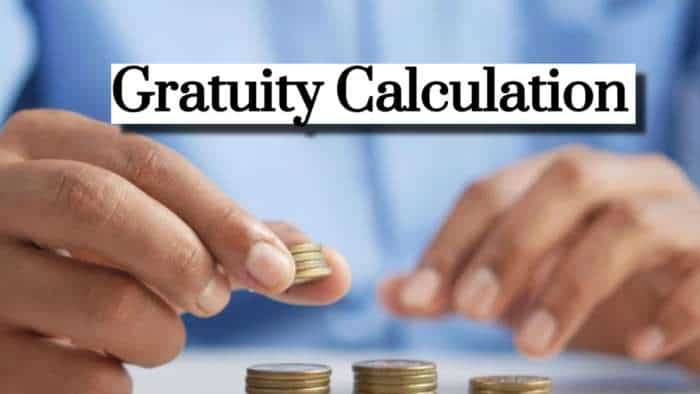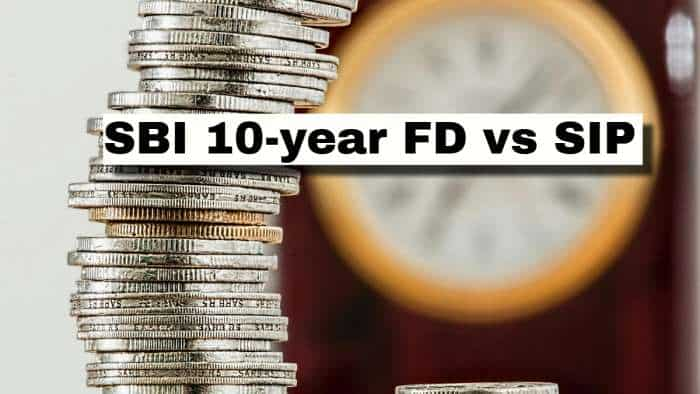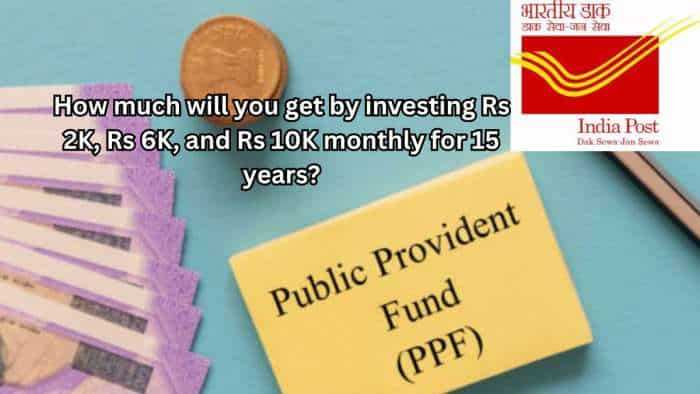7th Pay Commission: Top 15 points that central government employees really need to know
In 7th Pay Commission, arrears of pay and pensionary benefits were decided to be paid during the then financial year 2016-17 itself while in 6th CPC, it got 32 months for implementation.

7th Pay Commission: In a bid to benefit over 1 crore central government employees, which includes 47 lakh employees and near 53 lakh pensioners, the central cabinet chaired by the Prime Minister Narendra Modi approved the 7th Pay Commission that came into effect from April 1, 2016. The cabinet also decided to pay the arrears of pay and pensionary benefits were to be paid during the then financial year 2016-17 while on previous occasions, the employees had to wait for 19 months in 5th CPC while in 6th CPC, the tenure was around 32 months. However, there are some important facts that each and every employee and the pensioner must know about the 7th CPC:
1] The present system of Pay Bands and Grade Pay has been dispensed with and a new Pay Matrix as recommended by the Commission has been approved. The status of the employee, hitherto determined by grade pay, will now be determined by the level in the Pay Matrix. Separate Pay Matrices have been drawn up for Civilians, Defence Personnel and for Military Nursing Service. The principle and rationale behind these matrices are the same.
See Zee Business video below:
#AajKe2000 | जानिए आज अनिल सिंघवी ने क्यों दी रिलायंस पावर में खरीदारी की सलाह।@AnilSinghviZEE @kunalsaraogi @iamrakeshbansal pic.twitter.com/V6P0uTzATl
— Zee Business (@ZeeBusiness) March 5, 2019
2] All existing levels have been subsumed in the new structure; no new levels have been introduced nor has any level been dispensed with. Index of Rationalisation has been approved for arriving at minimum pay in each Level of the Pay Matrix depending upon the increasing role, responsibility, and accountability at each step in the hierarchy.
3] The minimum pay has been increased from Rs. 7000 to 18000 p.m. Starting salary of a newly recruited employee at the lowest level will now be Rs. 18000 whereas for a freshly recruited Class | officer, it will be Rs 56100. This reflects a compression ratio of 1:3.12 signifying that pay of a Class | officer on direct recruitment will be three times the pay of an entrant at the lowest level.
4] For the purpose of revision of pay and pension, a fitment factor of 2.57 will be applied across all Levels in the Pay Matrices.
5] Rate of increment has been retained at 3 %. This will benefit the employees in future on account of higher basic pay as the annual increments that they earn in the future will be 2.57 times than at present.
6] The Cabinet approved further improvements in the Defence Pay Matrix by enhancing Index of Rationalisation for Level 13A (Brigadier) and providing for additional stages in Level 12A (Lieutenant Colonel), 13 (Colonel) and 13A (Brigadier) in order to bring parity with Central Armed Police Forces (CAPF) counterparts at the maximum of the respective Levels.
7] Some other decisions impacting the employees including Defence & Central Armed Police Forces (CAPF) personnel include :
a) Gratuity ceiling enhanced from Rs. 10 to 20 lakh. The ceiling on gratuity will increase by 25 % whenever DA rises by 50 per cent;
b) A common regime for payment of ex-gratia lump sum compensation for civil and defense forces personnel payable to Next of Kin with the existing rates enhanced from Rs 10-20 lakh to 25-45 lakh for different categories;
c) Rates of Military Service Pay revised from Rs. 1000, 2000, 4200 & 6000 to 3600, 5200, 10800 & 15500 respectively for various categories of Defence Forces personnel;
d) Terminal gratuity equivalent of 10.5 months of reckonable emoluments for Short Service Commissioned Officers who will be allowed to exit Armed Forces any time between 7 and 10 years of service; and
e) Hospital Leave, Special Disability Leave and Sick Leave subsumed into a composite new Leave named ‘Work Related Illness and Injury Leave’ (WRIIL). Full pay and allowances will be granted to all employees during the entire period of hospitalization on account of WRIIL.
8] The Cabinet also approved the recommendation of the Commission to enhance the ceiling of House Building Advance from Rs 7.50 lakh to 25 lakh. In order to ensure that no hardship is caused to employees, four interest-free advances namely Advances for Medical Treatment, TA on tour/transfer, TA for the family of deceased employees and LTC have been retained. All other interest-free advances have been abolished;
9] The Cabinet also decided not to accept the steep hike in monthly contribution towards Central Government Employees Group Insurance Scheme (CGEGIS) recommended by the Commission. The existing rates of monthly contribution will continue. This will increase the take-home salary of employees at lower levels by Rs 1470. However, considering the need for social security of employees, the Cabinet has asked Ministry of Finance to work out a customized group insurance scheme for Central Government Employees with a low premium and high-risk cover;
10] The general recommendations of the Commission on pension and related benefits have been approved by the Cabinet. Both the options recommended by the Commission as regards pension revision have been accepted subject to feasibility of their implementation;
11] Revision of pension using the second option based on fitment factor of 2.57 shall be implemented immediately. A Committee is being constituted to address the implementation issues anticipated in the first formulation. The first formulation may be made applicable if its implementation is found feasible after examination by the proposed Committee which is to submit its Report within 4 months;
12] The Commission examined a total of 196 existing Allowances and, by way of rationalization, recommended the abolition of 51 Allowances and subsuming of 37 Allowances. Given the significant changes in the existing provisions for Allowances which may have wide-ranging implications, the Cabinet decided to constitute a Committee headed by Finance Secretary for further examination of the recommendations of 7th CPC on Allowances. The Committee will complete its work in a time bound manner and submit its reports within a period of 4 months. Till a final decision, all existing Allowances will continue to be paid at the existing rates.
13] The Cabinet also decided to constitute two separate Committees (i) to Suggest measures for streamlining the implementation of National Pension System (NPS) and (ii) to look into anomalies likely to arise out of the implementation of the Commission’s Report.
14] Apart from the pay, pension and other recommendations approved by the Cabinet, it was decided that the concerned Ministries may examine the issues that are administrative in nature, individual post/ cadre specific and issues in which the Commission has not been able to arrive at a consensus; and
15] As estimated by the 7th CPC, the additional financial impact on account of implementation of all its recommendations in 2016-17 will be Rs. 1,02,100 crore. There will be an additional implication of Rs. 12,133 crore on account of payments of arrears of pay and pension for two months of 2015-16.
Get Latest Business News, Stock Market Updates and Videos; Check your tax outgo through Income Tax Calculator and save money through our Personal Finance coverage. Check Business Breaking News Live on Zee Business Twitter and Facebook. Subscribe on YouTube.
RECOMMENDED STORIES

LIC Saral Pension Plan: How to get Rs 64,000 annual pension on Rs 10 lakh one-time investment in this annuity scheme that everyone is talking about

Gratuity Calculation: What will be your gratuity on Rs 45,000 last-drawn basic salary for 6 years & 9 months of service?

Rs 1,500 Monthly SIP for 20 Years vs Rs 15,000 Monthly SIP for 5 Years: Know which one can give you higher returns in long term

LIC Saral Pension Plan: How much should you invest one time to get Rs 64,000 annual pension for life?

Income Tax Calculations: What will be your tax liability if your salary is Rs 8.25 lakh, Rs 14.50 lakh, Rs 20.75 lakh, or Rs 26.10 lakh? See calculations

Monthly Pension Calculations: Is your basic pension Rs 26,000, Rs 38,000, or Rs 47,000? Know what can be your total pension as per latest DR rates
10:37 AM IST











 8th Pay Commission: Prime Minister Narendra Modi gives nod to new pay commission; 7th Pay Commission tenure extended till 2026
8th Pay Commission: Prime Minister Narendra Modi gives nod to new pay commission; 7th Pay Commission tenure extended till 2026 Will 8th Pay Commission be implemented? Salary revision, DA hike and other key details central govt employees need to know
Will 8th Pay Commission be implemented? Salary revision, DA hike and other key details central govt employees need to know 7th Pay Commission: How much gratuity one will get on salaries of Rs 20,000, Rs 30,000 and Rs 50,000; see calculation
7th Pay Commission: How much gratuity one will get on salaries of Rs 20,000, Rs 30,000 and Rs 50,000; see calculation 7th Pay Commission: How much gratuity one can get on Rs 15K and 20K basic salaries; know calculations
7th Pay Commission: How much gratuity one can get on Rs 15K and 20K basic salaries; know calculations 7th Pay Commission: Centre hikes HRA for its employees; know city-wise limits
7th Pay Commission: Centre hikes HRA for its employees; know city-wise limits